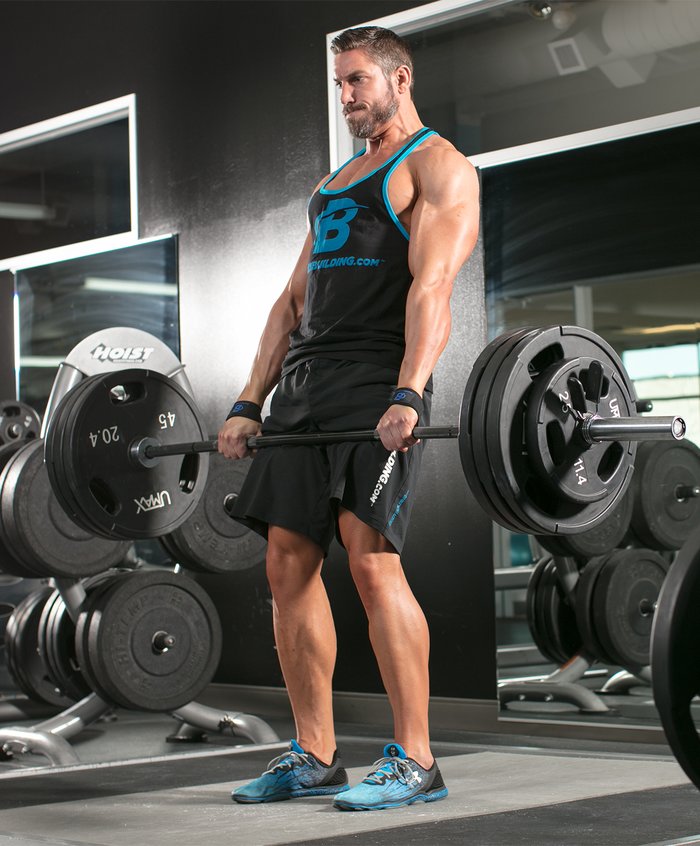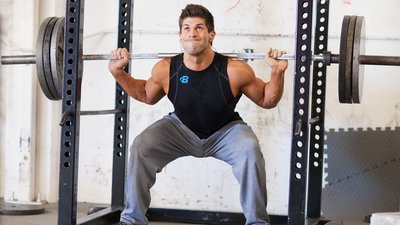Plenty gets written about the excuses people use to hold themselves back, not train, and not improve themselves. But not nearly as much gets written about the other extreme—the stories we tell ourselves to justify leaping into the most advanced training and programming methods, extreme nutritional and supplement protocols, and brutal strength standards.
You may know this phenomenon in a different way. It's that voice in your head that demands to know on a regular basis, "How strong are you really? Let's find out right now!"
What could be wrong with grinding through a few heavy singles, you ask? After all, everyone from a world-class powerlifter to a world-class YouTube commenter can tell you exactly how much they can bench or squat right here, right now. Without it, they wouldn't even know how strong they are, right? Well, that's the problem. While knowing your max strength limit definitely has its uses, I would argue that it's far from a complete portrayal of how strong you are.

It's time to stop defining ourselves as lifters by how much we can lift one damn time. It's time to start building strength, rather than just testing it. Here are two better approaches!
Case Study 1: Desk-Job Bob
Meet Bob from accounting. Bob doesn't get paid to work out. He has a desk job, and on the side, he likes to do some squats. He doesn't intend to compete in powerlifting or any other strength sport. He goes to the gym consistently and sticks to the basics—as he should.
On the surface, Bob is a coach's dream. But because he's human—and because he's been reading online about "show" versus "go"—Bob also wants to get stronger. And sticking to sets of 12, 10, or even 5 reps doesn't feel enough like "strength training" to him. So, once a week, he skips the small plates, slaps on a few of the big boys, and grinds through a few cringe-worthy singles to make sure he still "owns" his top weight.
If Bob doesn't hurt himself—which is a big "if"—it could be tempting to write this off as harmless. But in all honesty, the real crime is that he wasted what could have been a productive strength-building session. Over time, these informal rep tests stack up into a lot of lost opportunities to actually get stronger.
Better for Bob: Test Once a Year, Then Hit Reps Year-Round
I often recommend that a noncompetitive lifter like Bob could test his one-rep max in a squat, deadlift, or press just once a year, and proceed to train exclusively for 8-10 reps for the next 12 months. I guarantee when he retests his maxes, the amount they drop will hardly be significant, if they drop at all.
If you read my article "How To Get Stronger: 5 Rules That Make All the Difference," you'll see that three of the four strength standards I advocate are for 10 reps.

The "strength only gets built in 1-3 reps" camp may scoff at this, but I'm fine with that. The idea that anything less than a heavy single or double has zero carryover to a muscle's strength, a tendon's thickness, or a bone's density is asinine. People need to quit with the rep-range wars.
Picking up a 600-pound bar once and putting it back down only makes us better at performing that specific task. Doing 10 reps with half that weight can help train muscular strength, but also the energy systems that Bob will use when, say, helping his sister move into her new apartment.
So, if you feel like you need to know your number, then at the beginning or end of each year, touch base with yourself. Hit the iron and pull your brains out. Lift the world. Test your max for each big lift over the course of that week. Then leave it alone.
Case Study 2: Lifter Lee
Yep, that's me! And sure, I've tested my 1RM in a wide variety of lifts over the years. But the video isn't always, shall we say, perfect. Actually, I would argue that a true max effort should look pretty ugly by form standards. In fact, even if you're doing a "safe" lifetime PR, as I call the rep I perform in this video of my annual 1RM test from 2016, it's usually still flawed.
Sure, I reach a good depth, but my knees wobble, my eccentric rep doesn't exist, I favor one side, and I start to pitch forward halfway up. But by YouTube squat PR standards it was still a pretty smooth rep!
Contrast that with this video, which is 120 pounds lighter, three times the reps, and has a pause at the bottom:
Which one is truly the stronger lift? I'd say it's the second one. Outside of the ego boost and the opportunity to have a relatively accurate number to base my percentages off of, my max doesn't give me a whole lot. That strict triple, on the other hand, was real strength training.
A better Way for Lee: Truly Own 80-90%, not Just 100%
Sure, I could have kept revisiting that top weight to try and "own" that single, but why hit my head against the wall and risk injury? I would rather step back and nail quality reps in other rep ranges, and focus on making lighter weight feel heavy.
That's the approach I recommend for other experienced lifters, too. Rather than caving to the urge to see what your 1RM might be on any given day, see what you can do with 90 percent instead. Personally, if a guy with an ugly 400-pound-max squat dropped it to 300-something and nailed a smooth, paused, deeper-range double or triple, I'd be more impressed.
This is the also approach that will ensure you'll last long enough to be an old gym rat someday, not just someone in a chair bragging about the PRs of the past.

